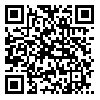
International Journal of Industrial Engineering & Production Management
Iran University of Science and Technology
BibTeX | RIS | EndNote | Medlars | ProCite | Reference Manager | RefWorks
Send citation to:
URL: http://ijiepm.iust.ac.ir/article-1-593-en.html
Ranking of a project's risks is considered an essential part of risk management process, especially when the number of risk factors increases. In the present study, a comprehensive structure of main risks existing in tunneling projects was initially prepared composed of 17 major levels and 196 sub-level, and these risks were subsequently ranked in tunneling project of Seymareh dam in South-West of Iran. To this end, group decision making method and weighted average were used for collection and aggregation of experts' judgment, respectively. In addition, linear assignment technique as one of decision making methods was employed in order to determine ranking of risks. Criteria for ranking were classified in two groups, namely primary and secondary classes. The primary index has been determined based upon probability and impact of risks on project goals (including: time, cost, quality and efficiency) with different weights. The second group of criteria included socio- economic impacts, environmental effects, risk proximity, risk exposure, relative uncertainty level and risk manageability. Taking advantage of linear assignment method, risks are better evaluated considering different criteria, and they are therefore ranked more realistically. It was concluded that the economical factors and regularity condition are the project most and least critical risks, respectively .
Received: 2011/06/15 | Published: 2011/05/15
| Rights and permissions | |
 | This work is licensed under a Creative Commons Attribution-NonCommercial 4.0 International License. |


